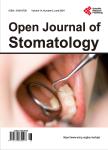Diminished fracture initiation sites in ceramic layers bonded to glow-discharge treated substructure
Diminished fracture initiation sites in ceramic layers bonded to glow-discharge treated substructure作者机构:Department of Oral Diagnostic Sciences University at Buffalo New York USA Department of Restorative Dentistry University at Buffalo New York USA VA Western New York Healthcare System at Buffalo New York USA
出 版 物:《Open Journal of Stomatology》 (口腔学期刊(英文))
年 卷 期:2013年第3卷第6期
页 面:307-313页
学科分类:1002[医学-临床医学] 100214[医学-肿瘤学] 10[医学]
主 题:Porcelain Fracture Glow Discharge Treatment Metal Ceramic Crown Porosity Surface Energy
摘 要:A mechanically retentive structure and meticulous surface cleanliness are critical factors in providing fracture resistance and clinical success of metal ceramic restorations. This investigation compared the porcelain/metal interfaces of deliberate compressive fractures of ceramic crowns between conventional preparation and application of the Radio Frequency Glow Discharge Treatment (RFGDT) before each bonding step. It evaluated RFGDT’s capacity to improve wetting effectiveness and minimize porosity. Twelve metal ceramic crowns were fabricated identically. RFGDT was applied to the metal substructures of half the specimens before the ceramic layering process. All specimens were fractured in the same manner by an applied compressive force to simulate dental occlusive failure. Fracture surfaces were inspected by light and scanning electron microscopy. Quantitative analyses of images were performed to identify numbers, locations of cracks, porosity patterns, and other morphological correlates of the fracture zones. There were significantly fewer voids per millimeter at the interfaces in the RFGDT group than in the non-RFGDT group (t = 2.377, df = 9, p = 0.021). There was a significant difference in the number of horizontal cracks per millimeter between the groups (t = 2.132, df = 7, p = 0.035), with more cracks occurring in the non-RFGDT group. RFGDT can improve the integrity of metal ceramic crowns by increasing the substratum surface energy, improving porcelain wetting and spreading and thereby diminishing the numbers of interfacial voids available for initiation of fracture. Routine application of RFGDT should result in fewer cracks along metal/ceramic interfaces in all restorative preparations.



